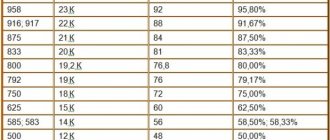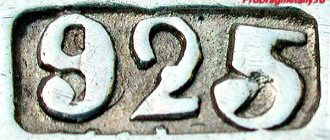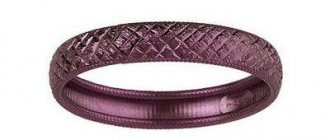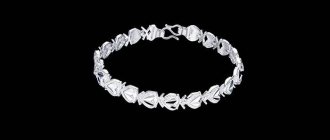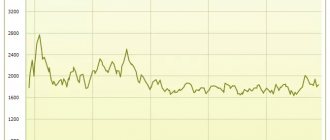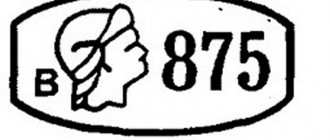How much does an ounce of silver weigh in grams? Every person who decides to invest in stock trading inevitably faces this question. Converting units of measurement can sometimes be a hassle, but many exchanges offer tracking rates that are clear to millions of customers.
In the past, difficulties often arose due to a number of discrepancies in measurement measures and the lack of a unified international system. Errors occurred because one country had a larger or smaller volume of an ounce of the precious metal (silver) than another.
Currently, exchanges strive for universality of meaning; operations can be performed from anywhere in the world, so no discrepancies in terminology and its understanding are allowed. Silver is an extremely popular commodity on the stock exchange: it gives good growth, is inexpensive, and anyone can afford to buy it. Therefore, in order to understand the possibilities of making a profit, you need to clearly understand what volume measures are used, how much money and what weight of precious metal is invested.
History of the troy system of measures
Weighing as a comparison of the weights of two objects has been familiar to mankind for thousands of years. Lever scales appear in images surviving from the earliest civilizations. This instrument was used almost unchanged until the twentieth century.
In medieval times, even money was determined by weighing. Jewelers and traders in Europe used wheat and barley grains as a standard, while in the east they preferred carob seeds. Due to the stability of their weight, four such seeds amounted to one carat.
A silver medieval penny weighed one pennyweight and was divided into two halves and four farthings by weight. A pennyweight was 1/240 of a troy pound, which in turn was equal to 5670 grains of barley, specially selected (with the same weight and length) so that they could be used as units of measurement.
The Troy measuring system supposedly originated in the 15th century in the French city of Troyes in Champagne, where large commodity fairs were held. The French-born King of England, Henry II, adjusted the British coinage system towards unifying it with the methods of weighing in Troyes. By 1527, this system had become the official standard for gold and silver in Great Britain. The US followed suit in 1828.
Ozt nowadays
Before the adoption of the metric system, troy units were used in various parts of Europe. Their values varied by several percent.
The modern unit of weight corresponds to the imperial troy ounce and the following proportions are accepted for it:
- 12 ozt is 1 tr. lb;
- 1 ozt contains 20 pennyweight.
Such ratios have a connection with the British monetary system, based on the old pound, which was equal to 240 pence. Therefore, such a weighing system is called a coin system. In the modern world, coin weights are used only for weighing precious metals and stones. According to ISO4217 codes, the following designations are assigned to the units of weight of investment metals:
- XAU - t oz gold;
- XAG - t oz silver;
- XPT - t oz platinum.
Today, ozt is the international standard for precious metals trading. All major trading platforms set prices without commenting on how many grams are in a troy ounce of gold and what quality, since experienced investors are in any case aware of such nuances.
Brief afterword
There was a period in history when it was necessary to find out what the ratio of 1 troy ounce to one avoirdupois was. Here it was necessary to make transfers from all countries of the world, as well as from all metals, be it silver, platinum or palladium. At this time, the price was unstable and some people lost a lot of money, but, nevertheless, everything was brought to a common denominator, which made it easier to convert ounces to grams and vice versa. For some time, silver trading was problematic, and only India could afford to sell silver because... the weight of its reserves is practically unlimited and they were weighed in grams.
Converting one measure of scale to another is a rather complicated task. Currently, there are several international currency exchanges where you can track all the rates of interest. Millions of people participate in such exchanges every day, a very large part of whom end up satisfied.
Equivalent in SI and avoirdupois
The Troyes scale measure involves dividing the pound into 12 parts. This is very different from the everyday weight system used in the United States, in which 16 ounces equal one pound.
Traditional American weight measurement is called the avowed weight system. The standard pound is heavier than the troy pound by approximately 21.5 percent and, in terms of grain measurement, was 7000 grains (grains) versus 5760 (12 × 480) in the troy pound. Gran is the smallest unit of mass for the pharmacy, troy and avoirdupois systems.
To understand how much an ounce of gold is in grams, you need to determine the net and gross standards for measuring precious metals. On precious metals exchanges, one ounce of gold always means a troy ounce of gold with a purity of 99.99%. This is the maximum purity of the noble metal; complete removal of impurities is technically impossible. The same applies to 1oz of silver or other precious metal.
Troy weight refers to pure metal only, any other components are subtracted from the pure weight. 31.1034768 grams - this number, accurate to the seventh decimal place, is sufficient for any practical application of knowledge of how many grams are in an ounce of 999 fine gold. 31.103 is a number that is easy to remember, meaning how much an ounce of gold weighs in grams in an approximation convenient for everyday use.
Between the metric, troy and avoirdupois systems, a large number of ratios in units can be made due to the cumbersomeness of traditional measures. For understanding, the following values converted to SI kilograms will be sufficient:
- 1kg = 35.2740 oz;
- 1kg = 32.1507 ozt;
- 1oz = 0.9114 ozt;
- 1oz = 0.02835 kg.
To measure the weight of gold items, a troy grain can be used, which is equivalent to a mass of 0.0648 grams.
Modern weight coins
The weight and purity of gold coins can be divided into two categories. The first is historical or everyday coins made of precious metal. The second includes those intended for investment purposes along with bullion.
Such coins are minted in accordance with the troy weight system and the following values are traditional for them:
- 1/10 t oz;
- ¼ t oz;
- ½ t oz;
- 1 t oz.
Gold Krugerrand
Minted at the South African Mint. In 1980, it accounted for 90% of all world gold coins. The name itself is a combination of the person's name on the front side and the unit of South African currency. In the 1870s. and 1980s. years, some countries banned the import of the Krugerrand due to links with apartheid South Africa. Now the coin is popular among collectors and investors.
Kruger rand production levels have varied considerably over half a century. In the first years, 40 thousand coins were minted, in 1970 the issue increased to 200 thousand copies and continued to grow. In total, approximately six million Krugerrands were produced.
The coin was developed as a means of private investment in gold, was sold equivalent to its price and had no face value, but had the status of legal tender. In addition to the ounce Krugerrand, small coins were minted in half and quarter and tenth oz t. The emission contains about 46 million ozt of gold (about 1500 tons). The Krugerrand's success prompted a reaction from other government mints, which also began minting coins on a fractional ounce basis.
Maple Leaf
Produced by the Royal Canadian Mint since 1979. Face value: 50 Canadian dollars. The market value varies depending on the price of gold. Its purity sometimes reaches 99.999%.
In addition to standard denominations, it is produced in weights of 1/25 and 1/20 t oz. The obverse and reverse feature a profile of Elizabeth II and a Canadian maple leaf. In 2007, the Royal Canadian Mint introduced a coin with a face value of $1 million with a gold price of $2 million. Its diameter was 50 cm, a thickness of 3 cm and a weight of 100 kg.
Chinese panda
A series of coin bars issued by the People's Republic of China. A Chinese mint official introduced a gold panda coin in 1982. The design has changed every year since then.
This coin comes in a variety of sizes and variations ranging from 1/20 t oz to 1 t oz. There are also a number of silver coins with the same characteristics. There are “Giant Panda” coins weighing 5 and 12 t oz.
American eagle
Produced since 1986 in 1/10, ¼, ½ and 1 t oz weights. The actual weight of gold indicated is guaranteed by the US government. The silver content of the alloy is 3%, which makes the coin not as red as the Krugerrand.
22 carat gold alloy (916 hallmark) is traditional English gold. It has not been used on US coins since 1834. By 1837, the gold content of the coin alloy had dropped to 90%. By the time the American Eagle appeared, the content had increased again to 91.67%.
Australian nugget
Minted by the Perth Mint, introduced by a company wholly owned by the Australian Government. Denominations were produced in 1/20, 1/10, ¼, ½, 1, 2, 10 oz and 1 kg of 99.99% gold. They have legal tender status in Australia. An annual limited edition with an original design makes the Australian Nugget a collector's item.
It has two unique features: a two-tone effect due to the rough matte and glossy surfaces and a custom hard encapsulation that protects the coin from impacts and scratches. These features were unusual for standard gold coins and allowed the Nugget to carve out a unique niche in the market.
Austrian Philharmonic (philharmoniker)
The coin has been minted in 99.99% pure gold since 1989. Issued annually in four denominations, sizes and weights. Legal as a means of payment in Austria, after circulation it inevitably ends up in private collections. According to the World Gold Council, it was the most traded coin in the world in 1932, 1995 and 1996. Produced in a weight of 1 t oz and a denomination of 100 euros.
On the reverse side there is a set of musical instruments representing the Vienna Philharmonic, on the reverse there is a large organ of the concert hall. The denomination of Philharmonikers is indicated in shillings (until 2002) or euros. The weight, purity of the alloy and year of manufacture are also indicated. Since 2008, not only gold, but also silver Philharmonic coins have been minted. Their design is identical to the gold coin except for the stated nominal value of 1.5 euros.
It is obvious that the minting of weight coins not only has not died, but is also experiencing a rebirth. Investors around the world buy and sell gold in troy ounces, so the idea of purchasing legal tender multiples of ozt values will always be attractive.
Troy ounce
The name of the English unit of weight “pound” is translated from Latin as “weight”. By the 18th century there were about 100 species of pounds in Europe. During times of feudal fragmentation, each vassal within his own domain had the right to assign his own measure of weight. The centralization of power led to the abolition of most currencies.
In the end, only the avoirdupois pound remains in the UK. 1/16 of it is considered an ounce - 28, 35 grams. The measure is actively used in countries where the English measurement system is used, for example, in France and the USA.
Ounces are used to weigh foods, medicines, and precious metals. True, for gold, silver, platinum, and palladium they use not an ordinary ounce, but a troy ounce. What are its differences?
Features of the troy ounce
The troy ounce was originally a measure of weight in Troyes, one of the cities of France. World's Fair No. 1 was located there. The trade center attracted people from all over the world. Everyone used different weights.
To avoid confusion, at the Troyes market everyone measured mass only in local troy ounces. They are larger than modern, standard ones and amount to 31.104 grams. Used exclusively for working with valuable metals. For example, bank bars are produced in categories starting from 1 ounce of Troyes.
Since a troy ounce in grams is almost 8% larger than a standard ounce, the question arises from which pound it was calculated. A typical pound of avoirdupois is approximately 0.45 kilograms. There used to be a troy pound, but it was lighter.
What's the catch? If the avoirdupois ounce is 1/16 of the modern pound, then the troy ounce is 1/12 of the abolished one. That is, the unit of weight of precious metals is larger than the usual ounce only because it was calculated in other fractions.
History of the troy ounce on the gold market
Until the first half of the 20th century, a troy ounce of gold in grams was valued in pounds sterling in most countries. At that time, the world had a gold and exchange standard. Monetary units were backed by yellow metal. One ounce was worth 3 pounds, 17 shillings and 9 pence.
Anyone could go to the bank and exchange their hard-earned money for bullion. An exchange was also made for the corresponding amount of gold in a different form. The main condition is that the metal is issued upon request. In fact, banknotes in hand are certificates for receiving jewelry.
The system collapsed in the 1950s. Money was no longer backed by gold reserves. began to fluctuate . cost began to change, although the weight remained the same. Setting the price is the prerogative of the London Interbank Exchange. The system is called London fixing.
The equilibrium price of the metal is taken from the five largest market participants. They calculate the bar in accordance with economic realities, gold reserves and demand for it. 1 troy ounce is fixed in euros, pounds and dollars. The latter, as a world currency, are considered the main indicator.
The price of a troy ounce of gold today fluctuates around $1,200. During the overthrow of the gold standard system, when the formation of the price of the yellow metal was out of the control of the Central Banks, only 35 dollars were taken for 31.104 grams of jewelry.
The realization of the value of gold came with an understanding of the unreliability of unbacked paper assets. They became a bubble during the oil crisis of the 1970s. The national debt grew, money was printed, and economically savvy citizens began to invest in tangible assets, mainly precious metals.
Back in the 2000s, the price per troy ounce was around 800-900 dollars. Now the price is approaching 1,300 conventional units for 31.104 grams of gold. But, there is also a troy ounce of platinum and silver. Let's figure out what their essence is.
Troy ounce of silver, platinum, palladium
The cost of a troy ounce of gold , like other metals, is set by the London fixing. There is one measure of weight, whether in silver or in platinum, it should be 31.104 grams. The difference is that some elements are used in pure form, while others are used diluted.
For example, a bullion coin may say that it contains 1 ounce of Troyes silver. You weigh the product, and it contains 40 grams. The remaining 9-odd grams are a ligature. That is, the coin uses an alloy of silver with other substances.
In gold investment products and platinum, the mass usually coincides with the specified data on troy ounces, that is, pure metal is used. There is a list of coins that are free of impurities and contain exactly one troy ounce of gold.
The South African “Krgerrands”, the Australian “Philharmonic” and “Gold Bar” (coin name), and the Chinese “Panda” have prices today. of one troy ounce of gold is also indicated on the American Eagle, Golden Buffalo and Canadian Maple Leaf.
All of the coins listed have silver duplicates and they also contain exactly one troy ounce of white metal without impurities. The price today for them is less than for investment signs of the Central Bank of Russia. Experts note that the cost of domestic products is too high. Therefore, the majority of Russians in 2014 invested money in samples from other countries.
In bank bullion, only the pure element is always used. The weight of the product must match the declared troy ounces. How many grams of silver is, is how much the bar weighs.
By the way, the designations for the unit of weight differ for platinum, palladium and silver. The troy ounce of the latter is marked with the abbreviation “XAU”. On palladium the marker is “XPD”, on platinum – “XPT”.





